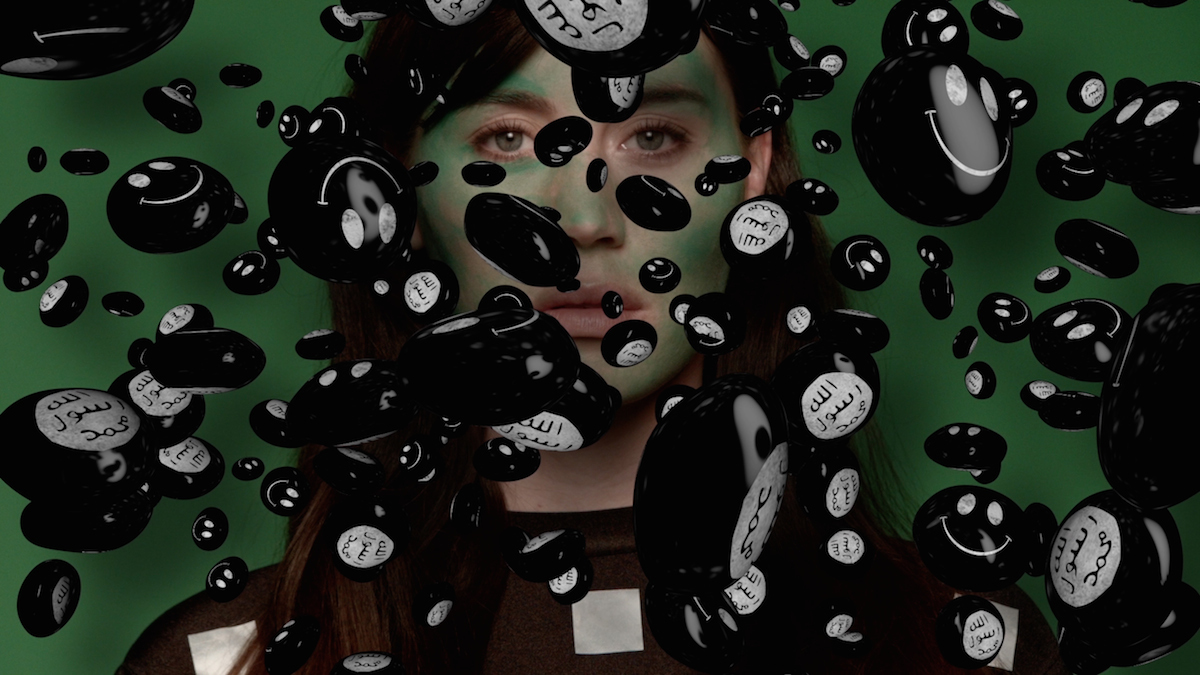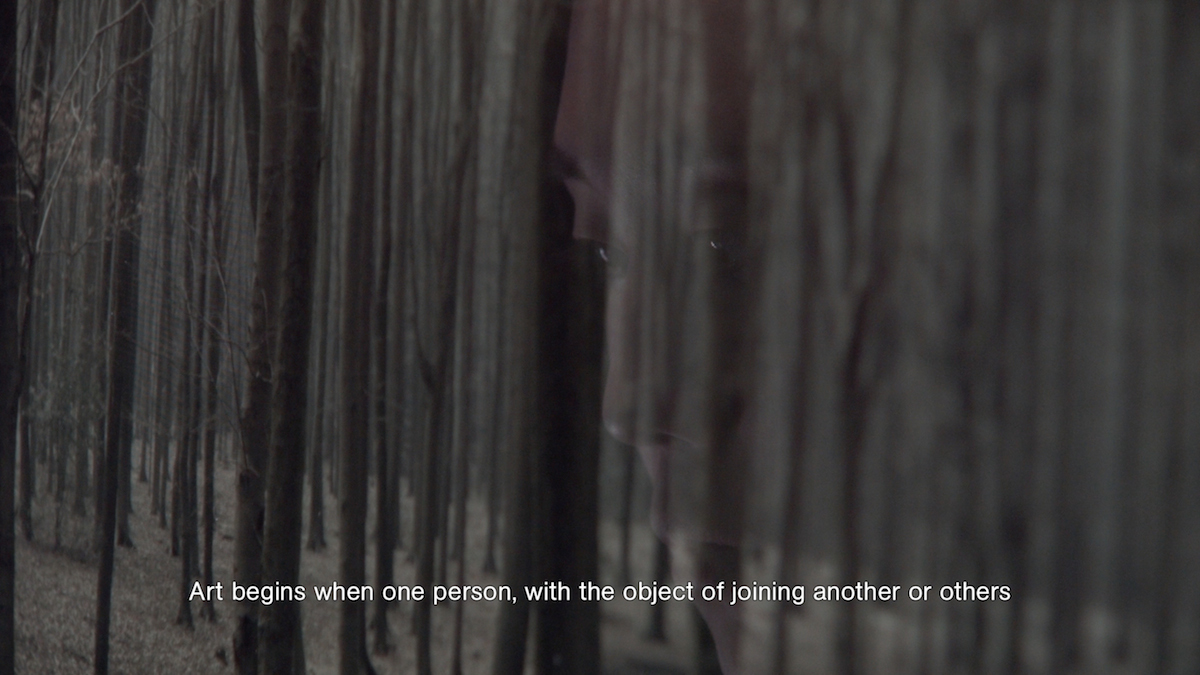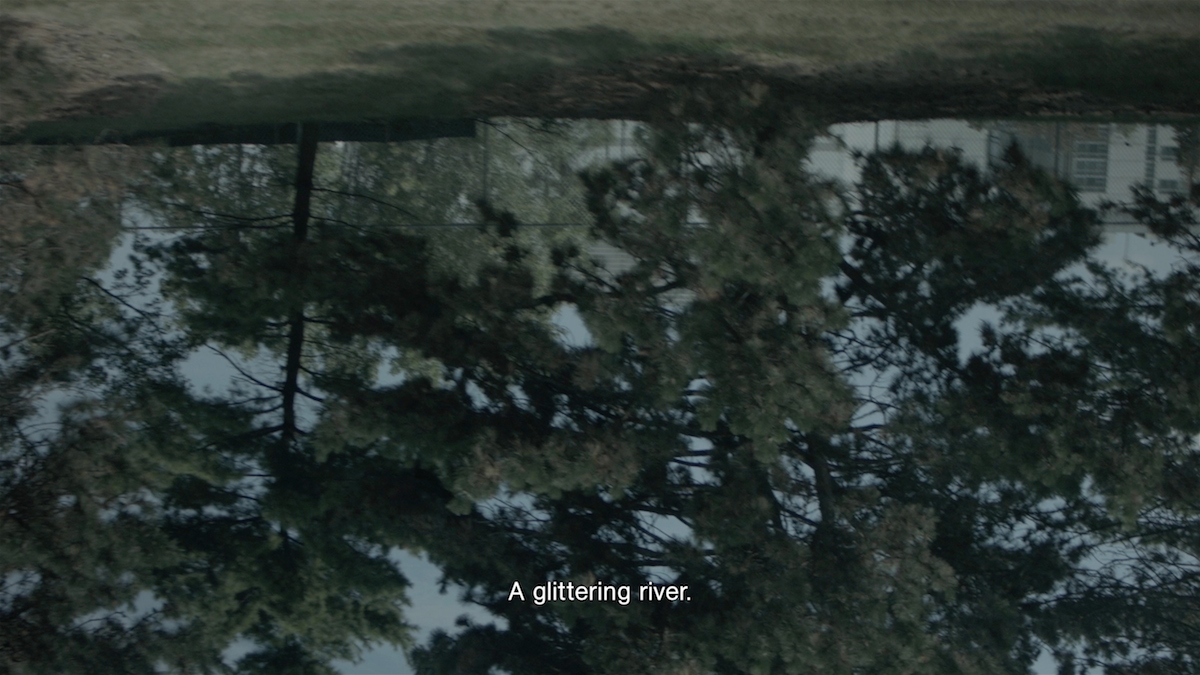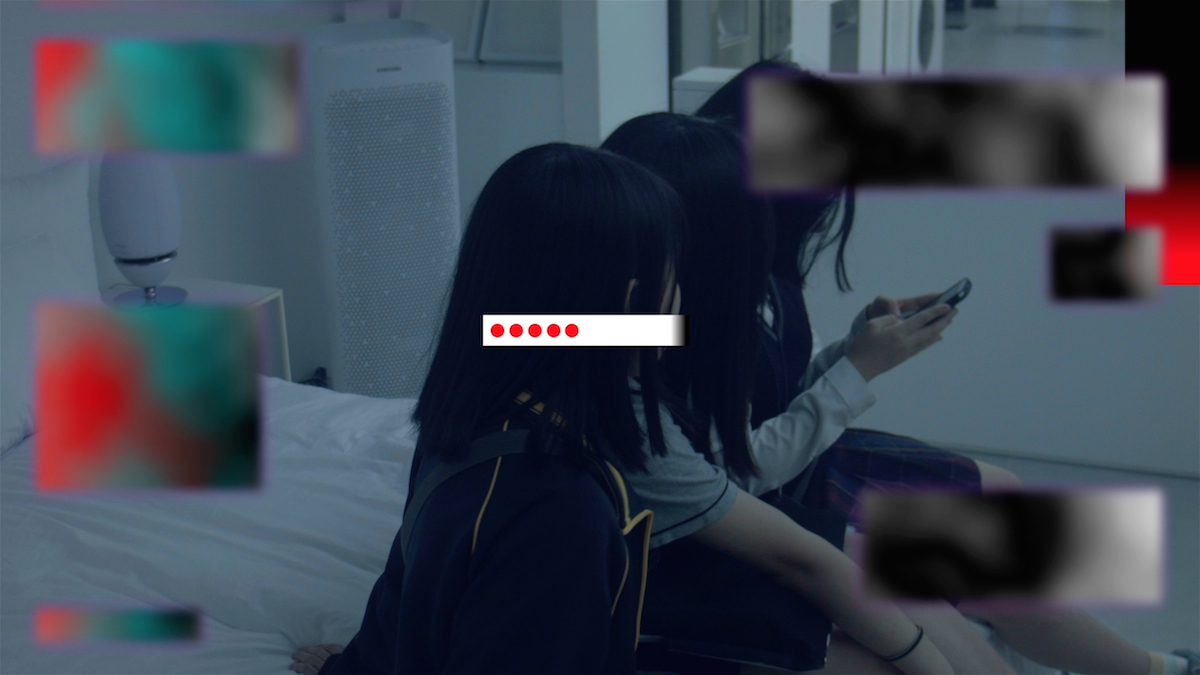As it strays into pop culture territory and is played out on the internet and social media, international relations is becoming more screwball by the day. Who is surprised when North Korea hacks Sony Pictures over an unflattering film? Or ISIS publishes a glossy lifestyle magazine for Jihadis? That President Assad of Syria has an active Instagram account? Or that Julian Assange has spent more than three years in exile in Ecuador’s London Embassy? Now it transpires that the Russian state created fake Japanese fan-art of its spokesperson, a young lawyer, in the Crimea, which it released on YouTube to deflect attention from its occupation of the region and sweeten its hardline impression.
So who better to make sense of propaganda in the social media age than clear-eyed designers. Dutch art and design collective, Metahaven, are staking a well-earned place alongside Adam Curtis and Harun Farocki as documentary-makers who investigate mainstream media accounts of geopolitics and interrogate notions of truth. In their first feature, The Sprawl, which premiered at Rotterdam’s IFFR and will be released in segments on YouTube, Metahaven take on propaganda in the social media age and, specifically, the Ukraine War, stepping through misinformation and media allegations over who shot down Amsterdam flight MH17 in 2014 (killing 298 people), and navigating sniper-like exchanges between Russia’s English language broadcaster, the nationalist Russia Today and America’s CNN.
The Sprawl picks up a thread left hanging from Adam Curtis’ 2014 series Bitter Lake. “Those in power tell stories to help us make sense of the complexity of reality, but those stories are increasingly unconvincing and hollow,” said Curtis. Today, Metahaven argue, these stories have mutated and multiplied taking on an inexorable agency of their own on the internet and social media – and now they seem too real. How do you keep track of and make sense of truth on the internet, the title’s ‘sprawl’, which exists above national borders as an apparatus of planetary-scale computation, which has a practical, de facto sovereignty, and for which there are no norms, according to Benjamin Bratton, a visual arts theorist interviewed in the film. The problem now is not so much transparency, as everyone with access to a smartphone has the power document events and disseminate. The problem is who has the power to interpret. “The effect, the spin of the information is much more important than the factual content,” says Daniel van der Velden, co-founder, with Vinca Kruk, of Metahaven.
Propaganda in the sprawl is not just remote from reality, but is played out on social media platforms to the extent that it doesn’t just seem real but when it is revealed to be fake feels like performance art.
The Sprawl is uniquely a documentary that a design studio could make. Designers by profession are implicitly attuned to the wireframes guiding our ‘user experience’. As a radical design studio and think tank, Metahaven have a kind of Dante in the underworld quality to their ability to navigate and elucidate propaganda across the internet’s corporatised coils and layers. They’re one of the few design agencies engaged in progressive politics demonstrated by branding work for major whistleblowers, countries, artists and independent media – whether making merch in the form of Louis Vuitton-style silk camo-scarves for WikiLeaks, promo sweatshirts that transfigure Chelsea Manning into a comic book ingenue, or music videos for electronic musician Holly Herndon.

The Sprawl’s layered and non-linear narrative combines fragments from Tolstoy, UN proceedings, Google Earth, found footage, internet interfaces and art direction. “We’re drawing from pop culture, geopolitics and design to create new stories and propositions that are themselves manifestations of everything we have done so far,” van der Velden explains. In some ways Metahaven see this expansion into film as part of a natural evolution in the design field, which is moving from a more reactive to proactive position. They also emphasise the inherent documentary quality of any type of creative work. “If you’re making work you’re always in a sense making a report of the times that you live in, so inevitably every act of design or art is in a sense journalism. It is an account of the conditions of the making of a piece – irrespective of what that piece is about.”
Metahaven describe the film as taking “a deeper, stranger look at things,” exploring how the West and Russia, while both “constantly lying”, hold contrasting notions of truth. It’s here in the examination of propaganda that aesthetics bleeds into international relations, and art complicates lies. ‘There are many ways in which Russia has a very tangible and rich poetical and lyrical tradition with different approaches to the consequences of truth,’ says van der Velden. In particular that truth is not an objective reality, but ‘a creative transfiguration.’ Whereas the West, Metahaven suggest, tends to takes a largely legalistic view of truth that gives less credence to poetic interpretations because art is ‘something that is seen as for after dinner, that is in a separate box, that you go to see’ – and leave behind when you get back to business.
In The Sprawl we see how the Kremlin uses Russia’s cultural tradition to strategically destabilise ideologies and ideas of the West. In 2014, an anime video surfaced on YouTube called Nyash Myash, posted by a subscriber by the name of Enjoykin (who also makes Russian house music). A totally amateur work of fan-art, it showed Natalia Poklonskaya, a Russian lawyer who was promoted to prosecutor general by the Kremlin, after its annexation of Crimea, as a doe-eyed machete-wielding icon, appearing brave and vulnerable. The animation comes with a vocoder soundtrack sounding uncannily similar to Julian Casablancas and Daft Punk’s Instant Crush, and got 5 million views in days, spawning thousands of memes and becoming an obsession in the Russian press (“She annexes your heart” – said Russia Today), who claimed it was big-in-Japan. The Sprawl reveals the event was likely internet ‘astroturfing’ – a way to fake support for a policy or product through fabricated personas – commissioned by the Kremlin but later led to real life fans and fan art, including a Vietnamese illustrator with no interest in politics. To anyone who’s been following post-internet artists, the project could as easily been conceived by artist Amalia Ulman who recently documented a trip on Instagram to the hermit-state North Korea, using a dancer persona redolent of communist-era cultural exchange. This is where propaganda and art get confusingly close.

While it’s not clear whether the Russians have a more poetic, postmodern or cynical attitude to truth, the Americans can be relied upon to take a totally humourless vigilante line. Metahaven draw a contrast between the madcap misdirection of Nyash Myash and CNN’s tendency to moralise and politicise everything with reductive headlines like, Is Ebola the ISIS of infectious diseases?- which leads Metahaven to pose a series of antic suppositions throughout The Sprawl from “the Marina Abramovic of Neo-Conservatism” to “the ISIS of gluten-free donuts.”
Droll and cool in outlook, as graphic designers Metahaven have an austere maximalist aesthetic that chimes like an HD / ADHD union of gothic and corporate. The medieval-feel captures qualities of increasingly feudal-like capitalist politics that are characterised by Crusade-like interventions, nepotistic elections, tycoon politics and a ruling class of social elites. Metahaven’s art-directed interludes in The Sprawl have a modern neo-Raphaelite quality that reflect overarching themes from the film. Models in profile contemplate flat screens as subjects with hidden interiority; another echoing Nyash Myash brandishes a Samurai sword with a sense of innocence. The smoke, HD screens and pop-art desktop motifs remind viewers that on screens everything is premeditated, mediated and politicised.
The Sprawl concludes with the unsettling notion that access to high production values will make design tools the new weapons of propaganda. We are used to seeing production values as a “regulated good” that only people with a fineness of sensibility could or should possess, but “the skills needed to create this kind of cinematic regime are more widespread,” reveals van der Velden. “There is continual amazement that non-American entities and non-European entities are able to produce highly polished and convincing visual material.” Before it was easier to spot non-liberals by their suspect graphics and outdated software – for example, the almost pre-technology “al Qaeda moment when Osama bin Laden appeared in his cave.” Things have moved on. Now ISIS use Adobe Creative Suite and uses it well, which confuses and troubles people. If you care to look the mediation of information, especially on the internet, is still inherently political. It makes post-internet art’s pinballing around memes, fake Instagrams, glitch and Tumblr aesthetics feel somewhat played-out.
The Sprawl (Propaganda About Propaganda) premiered at the Rotterdam International Film Festival and will open as an installation at the Yerba Buena Centre for the Arts and as a Youtube series.

